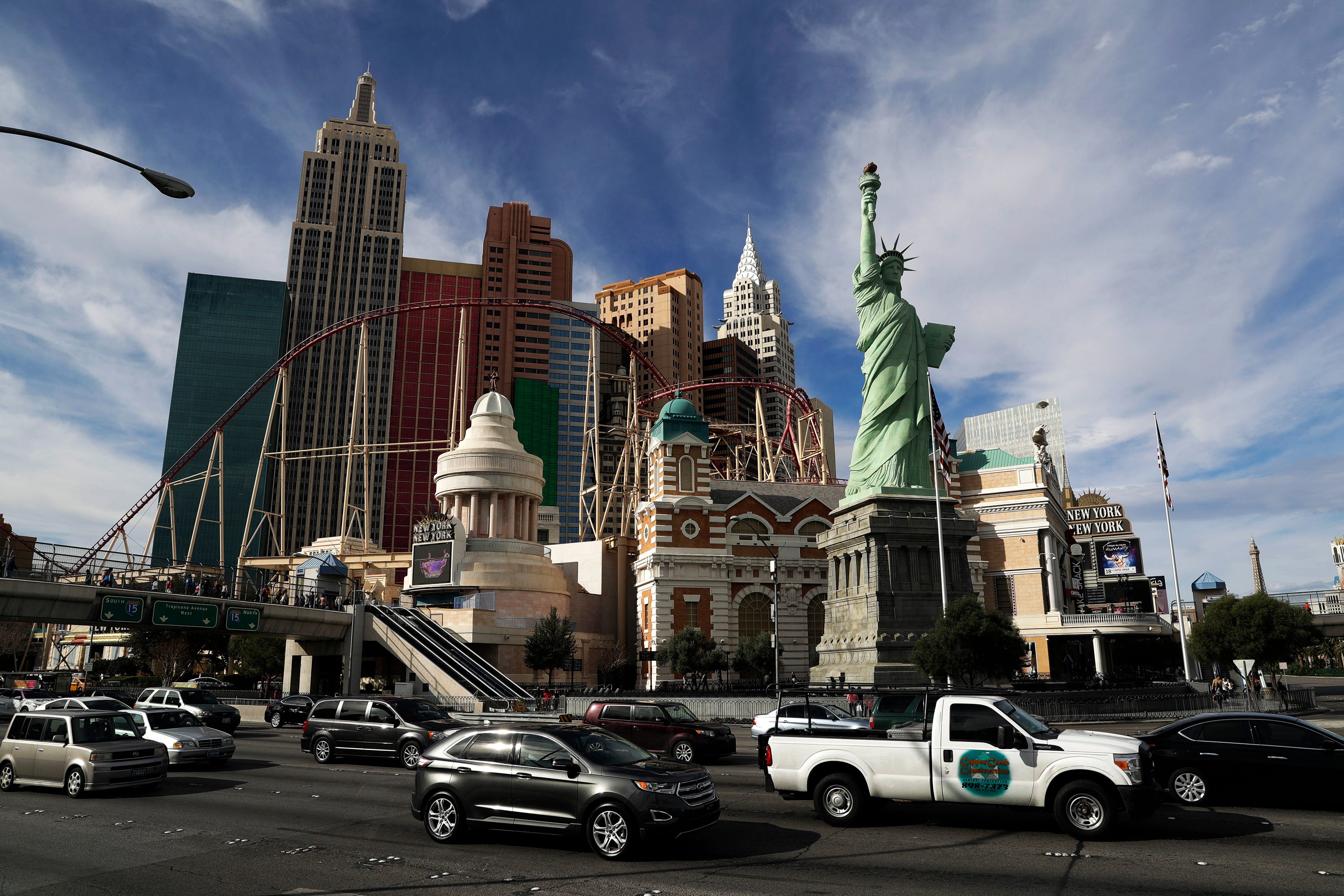College football is bringing its national championship game to New Orleans on Monday for the fifth time, cementing its status as America’s preeminent venue for big sporting events. In the modern era, no city has hosted more Super Bowls, more BCS/College Football Playoff title games or more Final Fours.
But as we enter the 2020s, America’s sports host of the future could be up for grabs because of Las Vegas, which suddenly has two major professional teams, more than $2 billion worth of new facilities and a strong desire to attract the same events that regularly come through New Orleans. The only question is, will the Final Four or the CFP championship game get there first?
“I’ll be in shock if they don’t come to Las Vegas,” said Jim Livengood, the longtime former athletics director at Arizona and UNLV, who has spent significant time in his retirement lobbying for big college sports events to come to Las Vegas. “It has to be the right event for the right site for the right time of year, and it doesn’t fit for every sport. But for five or six it works really well.”

Last May, the NCAA finally rescinded its policy that banned championship events from being played in states that offered sports gambling, which previously only applied to Nevada but was suddenly going to eliminate more than 10 states that immediately legalized it in the wake of the Supreme Court’s landmark 2018 decision.
Of course, the NCAA rule never made sense in the first place. Beyond college programs coming to play at UNLV and Nevada for decades, Las Vegas has hosted a bowl game since 1992, the Mountain West basketball tournament since 2000 and the Pac-12 tournament since 2013. Moreover, with online and offshore sports gambling becoming prevalent over the last decade, the stigma of college games being played in close proximity to casinos and sports books is no longer tethered to reality.
Still, it’ll be a big moment for college sports when the NCAA or the CFP eventually bring their championship events to Las Vegas. But when’s it going to happen, and once it does, will Sin City become as much a part of the regular rotation that hosts these things as New Orleans, Atlanta, Phoenix, Dallas and Indianapolis?
“We know that Las Vegas is an attractive destination for championships and we fully believe we are becoming the epicenter of sports,” UNLV athletics director Desiree Reed-Francois said. “In conjunction with our community partners, we’re being aggressive in trying to host championship events.”
National Championship Odds Special
Bet $1, WIN $200 (in free bets) if any LSU Tiger scores a touchdown against Clemson in the National Championship Jan. 13, 2020. Bet now!
Visit BetMGM to sign up and for terms and conditions.
The biggest issue, at least in the near-term, is availability. Though the NCAA men’s basketball committee met and toured venues in Las Vegas last summer and has a delegation visiting again in the coming weeks, Final Four sites are booked through 2026, though Las Vegas could bid on NCAA tournament regional sites as early as 2023.
As an independent organization, the CFP is not bound by whatever decision the NCAA makes with respect to Las Vegas and the basketball tournament but only has two unawarded championship games in 2025 and 2026, which marks the end of the Playoff’s current 12-year contract with ESPN. The bidding process for those games is yet to begin, but Las Vegas has already indicated it will make a strong run at holding one of them in the new $1.8 billion Allegiant Stadium, which sits just across Interstate 15 from the South end of the Strip.

Bill Hancock, the CFP’s executive director, wrote in an email that he expects a number of cities to be interested hosting for 2026 and 2026 and noted that “it has been good for college football” that they’ve awarded the game around to 10 different places for the first 10 years of the event.
“It wouldn’t be right for me to speculate about any potential host,” Hancock said. “I don’t want to handicap the field, except to say it will be a fascinating race.”
Las Vegas should be a no-brainer for one of those two slots, though, and the CFP should be positioning itself to get there before the Super Bowl (2025 is the NFL’s next open slot) and the Final Four, as there could be significant cachet that comes along with being first.
But there are a couple potential complications.
Also see:
– When and where to watch LSU vs. Clemson National Championship game
The CFP is going to Miami in 2021, Indianapolis in 2022, the new Los Angeles stadium in 2023 and Houston in 2024. Would going back out to the Pacific time zone in 2025 be too soon after L.A.? Also, the Consumer Electronics Show, which brings 170,000 people to Vegas annually, often takes place in a similar window to the CFP championship game around that weekend after New Year’s. The CES has not posted dates for 2025 and 2026 yet, but that could be a potential complication to keep in mind.
If that hurdle could be worked out, though, Vegas could very well establish itself as the absolute best venue for the game period. As fans have discovered over the first six years of the CFP, it is not a bowl week type of event. Fans typically come in at some point the weekend before the Monday night game and leave the next day. Also, because the travel plans for the winning semifinal teams are made on somewhat short notice, availability of affordable flights and hotel rooms is paramount.
From that standpoint, places like Dallas and Atlanta work exceedingly well. For entertainment options and good weather, cities like New Orleans and Miami come to the front of the pack. But it’s hard to imagine anywhere combining ease of travel with logistics like Las Vegas.
“There’s so many similarities to New Orleans,” Livengood said. “Everything is so darn close. The stadium, there isn’t anything you can’t do just by walking to it. It checks every single box. And the big thing is Vegas wants it. Vegas has really stepped up in terms of realizing this can be a market for athletics.”
This weekend in New Orleans, tens of thousands of LSU and Clemson fans will be taking over the French Quarter prior to the national championship on Monday night, a tradition that dates back decades for college sports fans. Hopefully, it will continue for decades more.
But the momentum is there now for Vegas to provide the same kind of platform for the biggest events in the coming years. Hopefully it won’t take college athletics much longer to embrace it.
[lawrence-newsletter]
[lawrence-auto-related count=3 category=1623]







